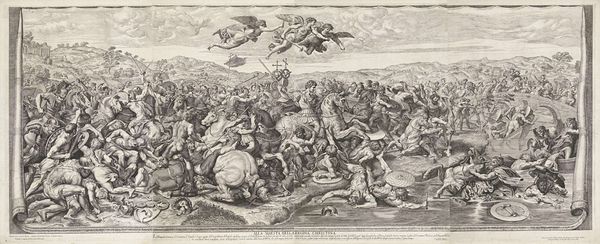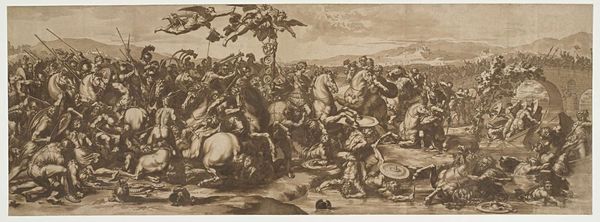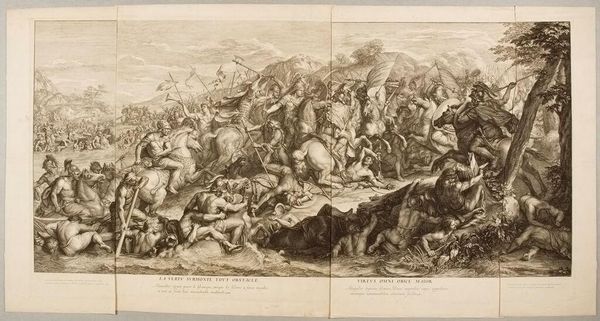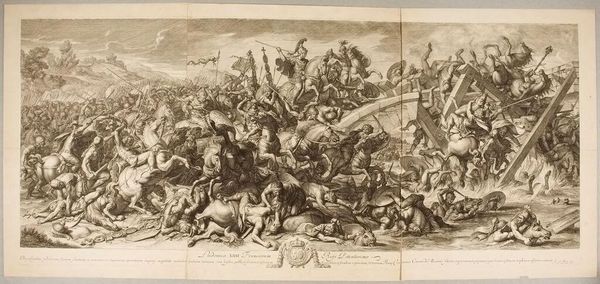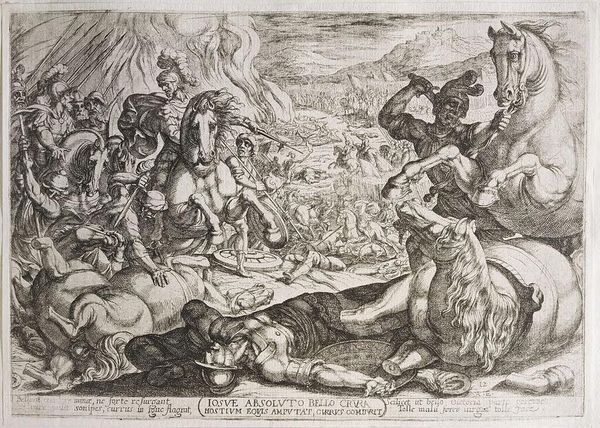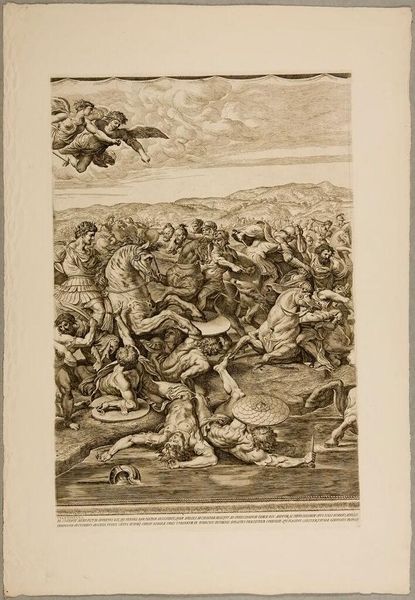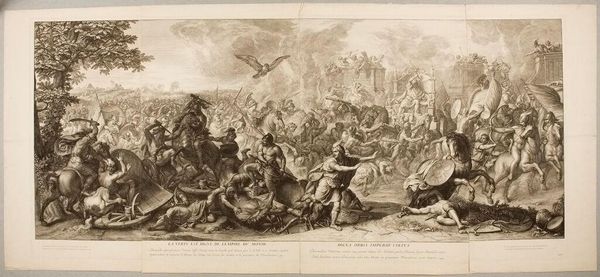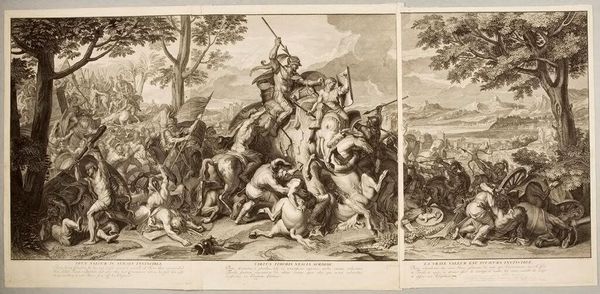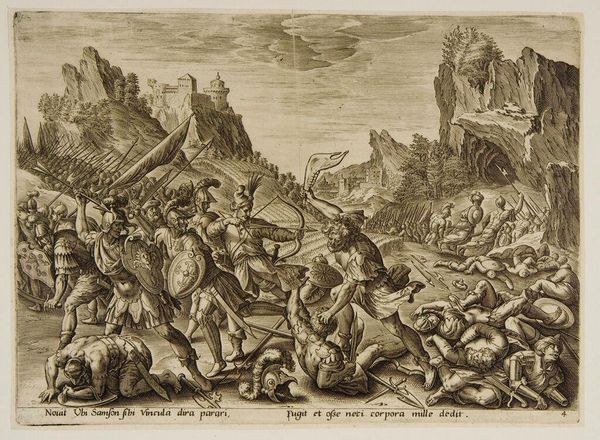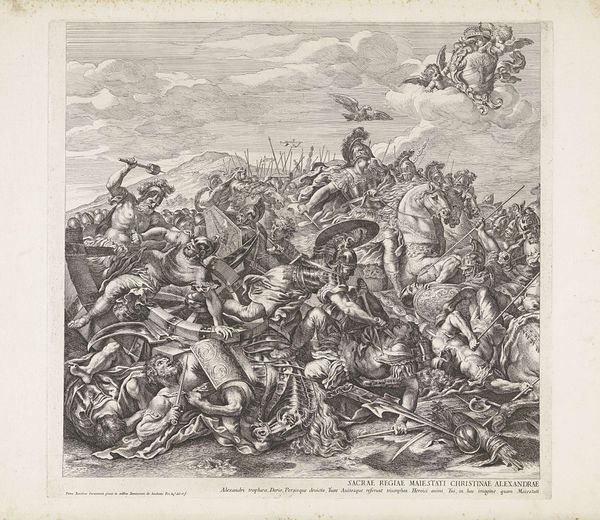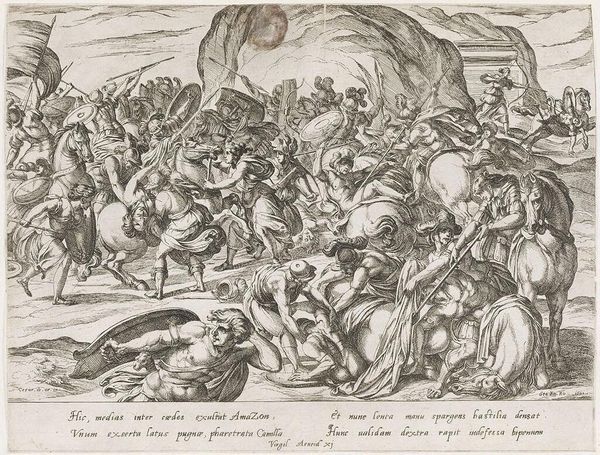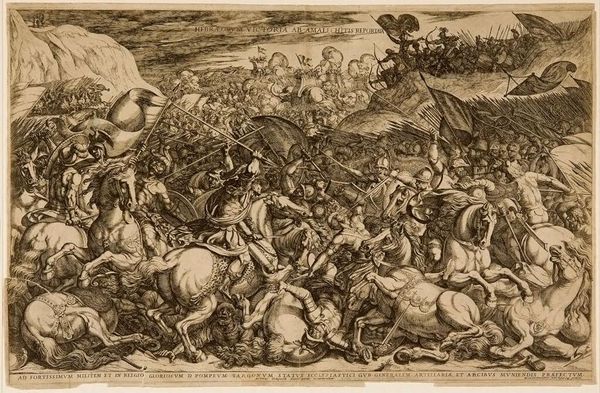
Copyright: CC0 1.0
Curator: Here we have Pietro Aquila's "Battle of Constantine," a densely packed scene of conflict. The print, created sometime between 1650 and 1700, depicts a chaotic clash. Editor: It’s overwhelmingly violent. Bodies are piled high, and there's a palpable sense of brutality in the figures' contorted poses. I wonder about the implications of portraying conflict so graphically. Curator: Aquila's technique, likely engraving or etching, allows for incredibly fine detail. Note the varied textures he achieves, from the armor to the skin of the combatants. Editor: Absolutely. And placing Constantine, a figure often used to justify power structures, at the center invites critique. How might audiences have understood this image in relation to their own political realities? Curator: The reproductive nature of prints speaks to broader consumption. These images were designed to be disseminated, engaging a public beyond the elite. Editor: I think we must consider how it normalizes violence through its circulation. It's not just aesthetic; it's a powerful statement about power dynamics and their historical reverberations.
Comments
No comments
Be the first to comment and join the conversation on the ultimate creative platform.
